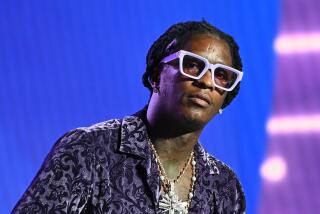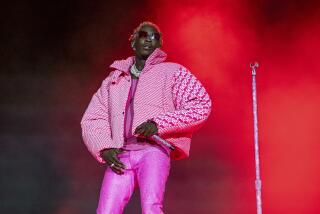Panel Finds Grounds to Remove Absentee Judge
- Share via
A three-judge panel has concluded that the state Commission on Judicial Performance would have grounds to remove Los Angeles Superior Court Judge Patrick B. Murphy from the bench for misconduct that included attending a Caribbean medical school while on the judicial payroll.
The three justices, who presided over a four-day hearing this year into Murphy’s conduct, “found clear and convincing evidence” that he was excessively absent since 1996 and falsely claimed more than 400 sick days.
Murphy, 46, they wrote, was persistently unable to perform his duties and failed to give priority to judicial affairs.
The panel could not recommend Murphy’s dismissal but was charged with establishing whether grounds existed for his removal. The commission is expected to decide next month whether to remove Murphy from office and cut off his $133,051 salary. Its decision will be based on the factual findings of the three justices in their 70-page report.
The report, completed Thursday, means Murphy is one step closer to being the first Los Angeles Superior Court judge to be ousted in more than a decade for misconduct.
Murphy’s credibility, the panel said, was particularly undermined by his attendance at Ross University School of Medicine in Dominica for two weeks in January 2000 while on sick leave.
“Judge Murphy simply abandoned his judicial position. He intended to leave the bench and pursue a medical career,” the three justices wrote. “Yet, he neither resigned nor applied for a disability retirement. Just as he had done in all the months before when he had not worked, he intended to continue to draw his judicial salary and in fact did so.”
Murphy, who could not be reached for comment Monday, most recently worked in traffic court in downtown Los Angeles. He went out on sick leave last July and has not returned.
Murphy, of Alhambra, has denied any wrongdoing and during the January hearing testified that he suffered from chronic fatigue syndrome, fibromyalgia--a pain-related disorder--and had a phobia that had kept him off the bench on numerous occasions since 1996. This phobia made him excessively nervous and prevented him from doing his work, he said.
Murphy testified that he never formally retired from the bench because he believed he would one day be able to return to work. He conceded during testimony in January that there was an “appearance of impropriety,” and that his acts had “caused incredible embarrassment for the judiciary.”
The three-judge panel found that Murphy’s excuses were not credible, given that he attended medical school, taught at Glendale College of Law and enrolled in premed classes in 1999 at a chiropractor college--all while on sick leave.
“Judge Murphy’s late-developing claim of judicial phobia is simply not believable,” the justices said. “What meager evidence there was on this point depends entirely on Judge Murphy’s credibility, which is sorely deficient.”
The three justices concluded that Murphy was medically able to carry out his judicial duties, noting that he ably appeared before them as his own attorney. “We find that Judge Murphy’s performance during the hearing belied his contentions that he was and is disabled,” they wrote.
The panel found that while Murphy was on sick leave, he told a medical school admissions officer that “he had no health problems.”
Murphy testified that when he jetted off to medical school, he believed an attorney had filed paperwork to establish his medical disability. The panel, however, found he never produced evidence to back up the statement.
Victoria B. Henley, chief counsel for the Commission on Judicial Performance, said the panel could take up the issue at its May 9-10 meeting.
The commission could choose to give Murphy anything from a private reprimand to removal from the bench. If the commission votes to remove Murphy, he could appeal to the California Supreme Court.
State investigators initiated a probe into Murphy in May 1999, after complaints of extensive absences from the Citrus Municipal Court in West Covina, where he was elected nine years ago.
More to Read
Sign up for Essential California
The most important California stories and recommendations in your inbox every morning.
You may occasionally receive promotional content from the Los Angeles Times.










